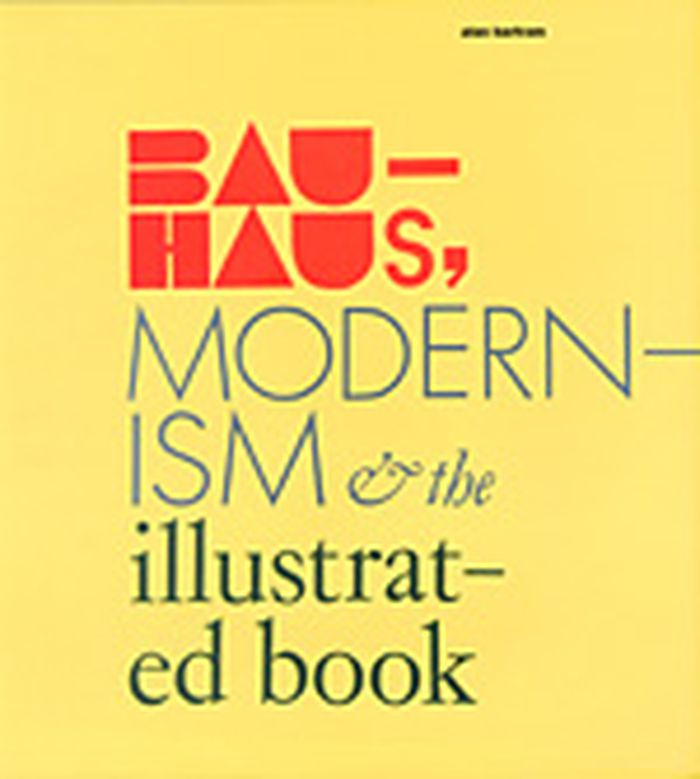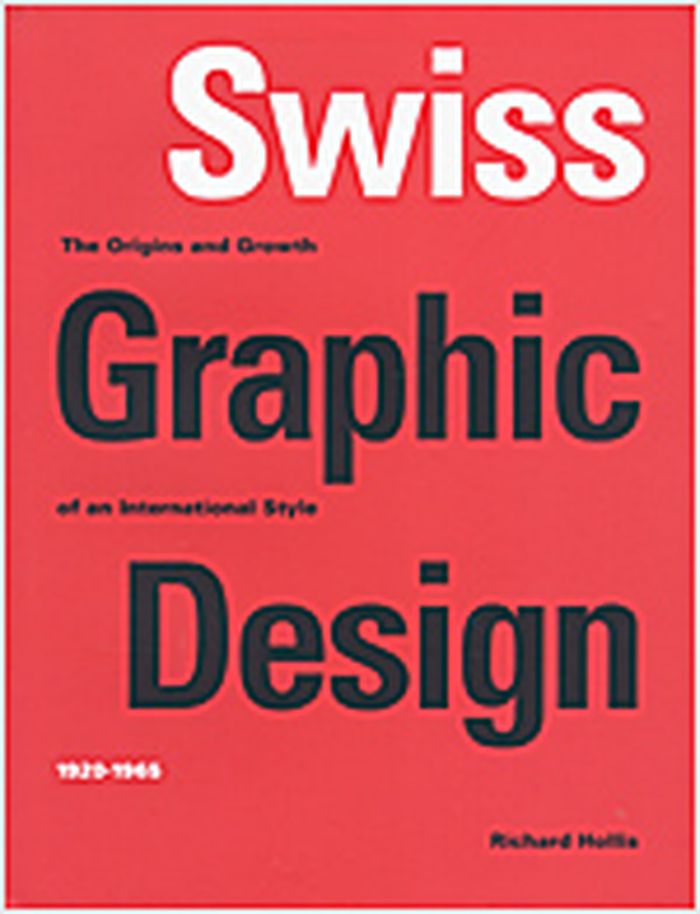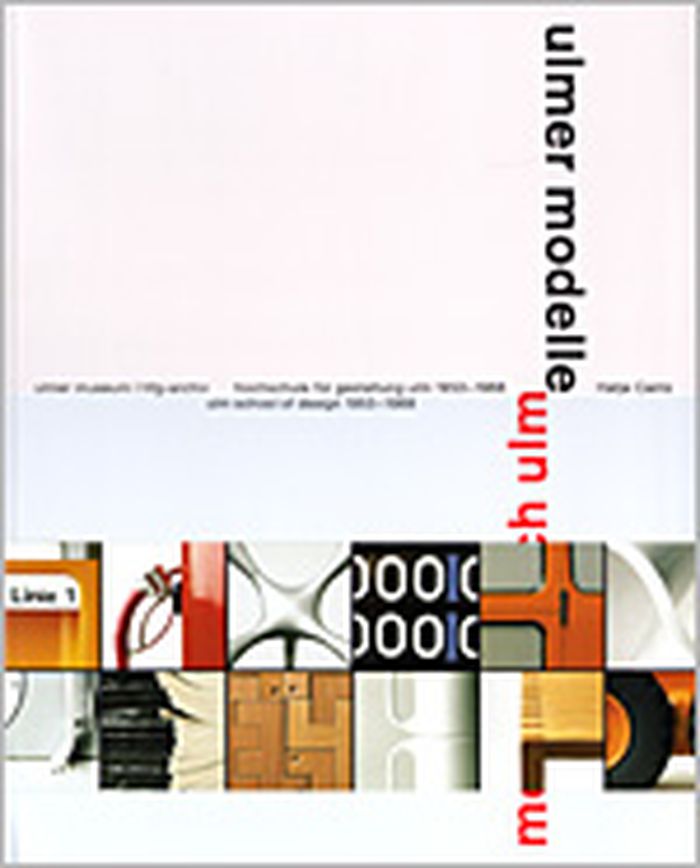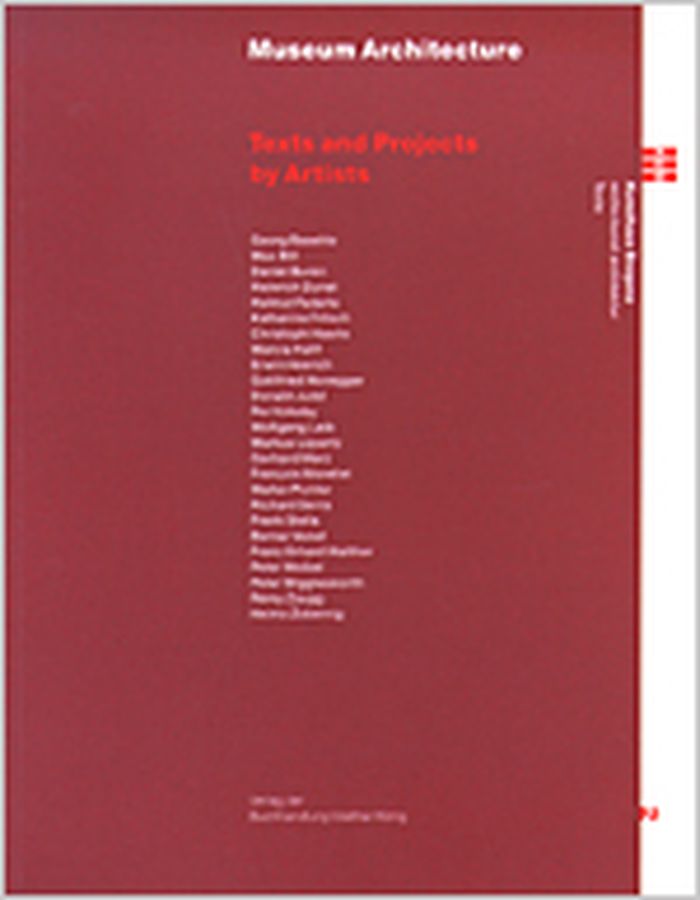$45.95
(disponible sur commande)
Résumé:
This lively and authoritative book explores the influence of the Bauhaus and modernism on typography and book design. Alan Bartram examines work by such key figures as Max Bill, F. T. Marinetti, El Lissitzky, László Moholy-Nagy, Jan Tschichold, and Paul Rand. All of the carefully chosen examples, some of which have not been previously reproduced, clearly demonstrate the(...)
Bauhaus, modernism & the illustrated book
Actions:
Prix:
$45.95
(disponible sur commande)
Résumé:
This lively and authoritative book explores the influence of the Bauhaus and modernism on typography and book design. Alan Bartram examines work by such key figures as Max Bill, F. T. Marinetti, El Lissitzky, László Moholy-Nagy, Jan Tschichold, and Paul Rand. All of the carefully chosen examples, some of which have not been previously reproduced, clearly demonstrate the modernist revolution that took place in graphic design. In an informative introductory essay, Bartram surveys the German art and design school known as the Bauhaus. Under Walter Gropius, the Bauhaus intended to create an academic, theoretical, and practical synthesis of all forms of visual expression, a marrying of art, architecture, industry, and design that had never been attempted before. Although the Bauhaus existed for only fourteen years, from 1920 to 1934, Bartram asserts that its philosophy influenced the appearance of almost every kind of modernist artifact throughout the twentieth century and continues to do so today.
$108.00
(disponible sur commande)
Résumé:
Swiss typographer and graphic designer Hans-Rudolf Lutz found the passion behind this book in the trash literally. In 1975, he happened to notice the graphics on some cardboard shipping boxes put out for garbage collection. They soon became an obsession, which has resulted in this fascinating 5000-illustration compendium. Lutz was enchanted by the simplicity and clarity(...)
Hans-Rudolf Lutz Today's Hieroglyphs
Actions:
Prix:
$108.00
(disponible sur commande)
Résumé:
Swiss typographer and graphic designer Hans-Rudolf Lutz found the passion behind this book in the trash literally. In 1975, he happened to notice the graphics on some cardboard shipping boxes put out for garbage collection. They soon became an obsession, which has resulted in this fascinating 5000-illustration compendium. Lutz was enchanted by the simplicity and clarity of these found graphics. Even with the most extreme reduction to essentials, their drawings are capable of conveying sensuality, surprise and precise information, Lutz writes. "I have come to admire these unsung designers." The book covers the spectrum from pure representation to decorative display to the personification of the product. This marvelous book is a sure source of wonder and inspiration for professional designers and is the first work of several that Niggli is bringing back by this pacesetting typographer, a follower of the great Max Bill and contemporary of Emil Ruder and Josef Muller-Brockman.
Signalétique
$62.50
(disponible sur commande)
Résumé:
Swiss graphic design and “the Swiss Style” are crucial elements in the history of modernism. During the 1920s and ’30s, skills traditionally associated with Swiss industry, particularly pharmaceuticals and mechanical engineering, were matched by those of the country’s graphic designers, who produced their advertising and technical literature. These pioneering graphic(...)
Swiss graphic design : the origins and growth of an international style 1920-1965
Actions:
Prix:
$62.50
(disponible sur commande)
Résumé:
Swiss graphic design and “the Swiss Style” are crucial elements in the history of modernism. During the 1920s and ’30s, skills traditionally associated with Swiss industry, particularly pharmaceuticals and mechanical engineering, were matched by those of the country’s graphic designers, who produced their advertising and technical literature. These pioneering graphic artists saw design as part of industrial production and searched for anonymous, objective visual communication. They chose photographic images rather than illustration, and typefaces that were industrial-looking rather than those designed for books. This volume looks at graphic language developed by such Swiss designers as Theo Ballmer, Max Bill, Adrian Frutiger, Karl Gerstner, Armin Hoffman, Ernst Keller, Herbert Matter, Josef Müller-Brockmann, and Jan Tschichold. The style of these artists received worldwide admiration for its formal discipline : images and text were organized by geometrical grids. Adopted internationally, the grid and sans serif typefaces such as Helvetica became the classic emblems of Swiss graphic design. This book shows design work across a range of media, including posters, magazines, exhibition displays, brochures, advertisements, books, and film.
$52.95
(disponible en magasin)
Résumé:
"Ulm design" is synonymous for clear, functional design of superior quality. On the occasion of the fiftieth anniversary of the founding of the Hochschule für Gestaltung in Ulm, this book issued by the Ulmer Museum and the HfG-Archiv pays tribute to the school's pioneering accomplishments. Just in time for the fiftieth anniversary of the founding of the Hochschule für(...)
Design industriel
septembre 2003, Ostfildern
Ulm School of Design 1953-1968
Actions:
Prix:
$52.95
(disponible en magasin)
Résumé:
"Ulm design" is synonymous for clear, functional design of superior quality. On the occasion of the fiftieth anniversary of the founding of the Hochschule für Gestaltung in Ulm, this book issued by the Ulmer Museum and the HfG-Archiv pays tribute to the school's pioneering accomplishments. Just in time for the fiftieth anniversary of the founding of the Hochschule für Gestaltung (School of Design, known as the HfG) in Ulm in 1953, this publication honors the pioneering work of its founding members Inge Scholl, Otl Aicher, and Max Bill. Founded on an antifascist impulse, the HfG encouraged the development of a democratic consciousness which was to influence design in general. Products were meant to be as long lived and functional as possible, acceptable with respect to social and ecological criteria, and to take into account changing political conditions and production technologies. The school's pedagogical concept, the so-called Ulm model, was characterized by a new system- oriented design methodology and the encouragement of interdisciplinary teamwork. The Ulm School of Design played a decisive role in establishing the idea of the professional "designer" in the form still valid today, and many designers who graduated from the HfG before its closure in 1968 are still teaching design-related subjects, thus carrying on the specific fundamental principles that empowered the HfG. Examples from design schools in Asia, North and South America, and India illustrate the effects of the design methods developed at Ulm.
Design industriel
$44.95
(disponible sur commande)
Résumé:
Essays, plans and projects by various artists,including Max Bill, Heinrich Dunst, Helmut Federle, Per Kirkeby, Katarina Fritsch, Erwin Heerich, Gerhard Merz, Gottfried Honegger, Walther Pichler, Ulrich Rückriem, Bernar Venet, Daniel Buren, Christoph Haerle, Peter Wigglesworth, Donald Judd, Markus Lüpertz, Arnulf Rainer, Richard Serra among others showing their ideas for(...)
Museum architecture : texts and projects by artists
Actions:
Prix:
$44.95
(disponible sur commande)
Résumé:
Essays, plans and projects by various artists,including Max Bill, Heinrich Dunst, Helmut Federle, Per Kirkeby, Katarina Fritsch, Erwin Heerich, Gerhard Merz, Gottfried Honegger, Walther Pichler, Ulrich Rückriem, Bernar Venet, Daniel Buren, Christoph Haerle, Peter Wigglesworth, Donald Judd, Markus Lüpertz, Arnulf Rainer, Richard Serra among others showing their ideas for how museums should be constructed. When discussing the increasing number of museums and exhibition spaces for modern art which have come into being in recent years, the deep-seated differences of opinion between architects and artists keep coming to the fore. The discussion seems to be almost exclusively dominated by the point of view of the architect and defined by his/her interests. The needs of the art itself are being widely neglected and the voice of the artist is simply not being heard. Donald Judd, the American sculptor and minimalist artist, once noted that museums are so rarely built on functional lines these days, the trend being more towards the creation of a showpiece for the architect. Why are painters and sculptors not asked for their input? The very obvious question was addressed by the Espace de l’art concret when in 1997, it asked a number of well-known artists to come up with ideas and projects for a museum for concrete art. They were invited to submit their ideal utopian suggestions as well as very concrete and architectural proposals and written statements. These are documented in this publication, supplemented with the material for the collection owned by the Kunsthaus in Bregenz and expanded with an extensive anthology of texts by artists on this subject. The résumé of the contributions presents a searing criticism of contemporary museum architecture by its most important users. Their voice will at last find an ear in the current architectural discussion about the new cathedrals of the post-industrial society.
Muséologie




